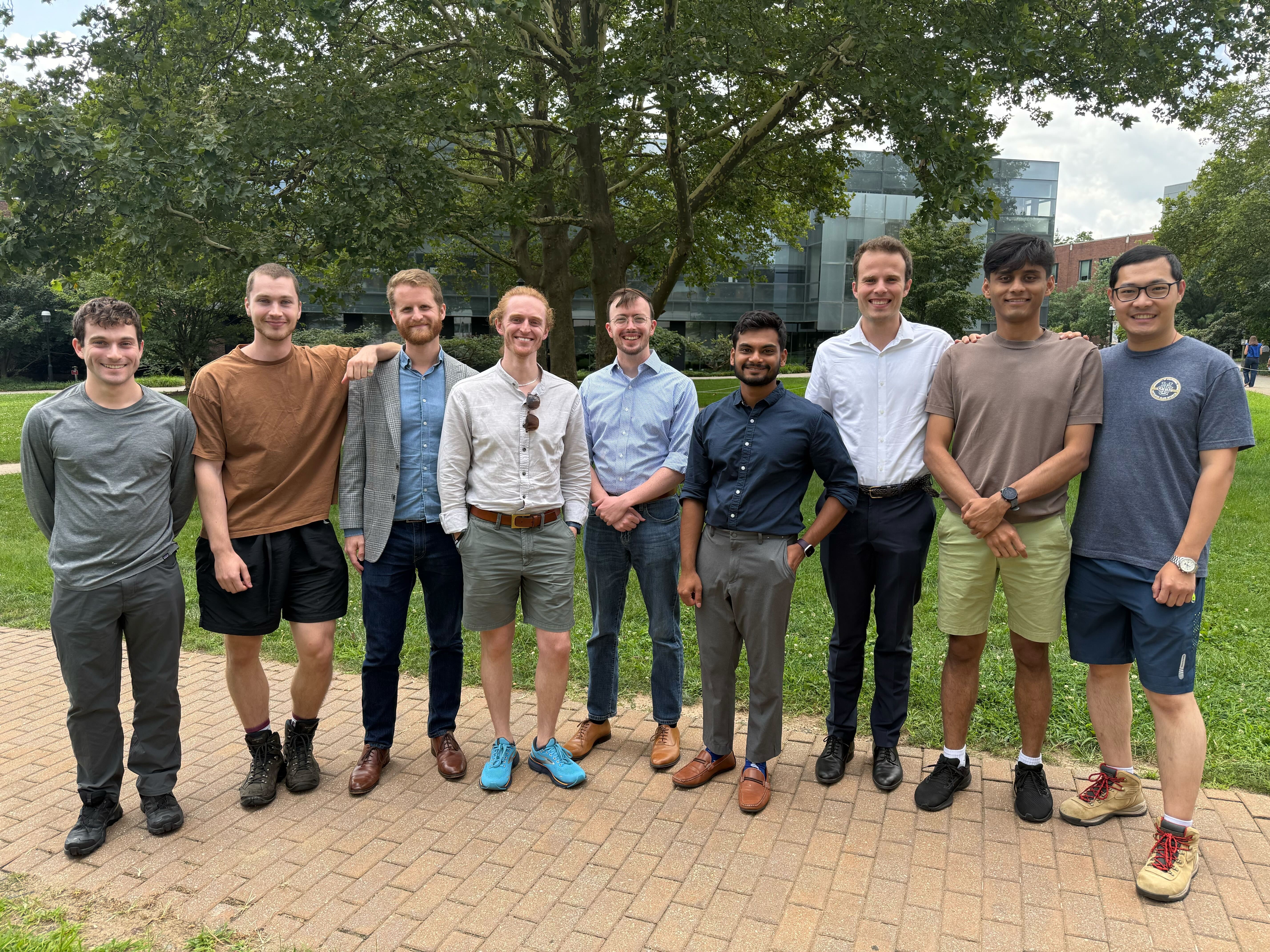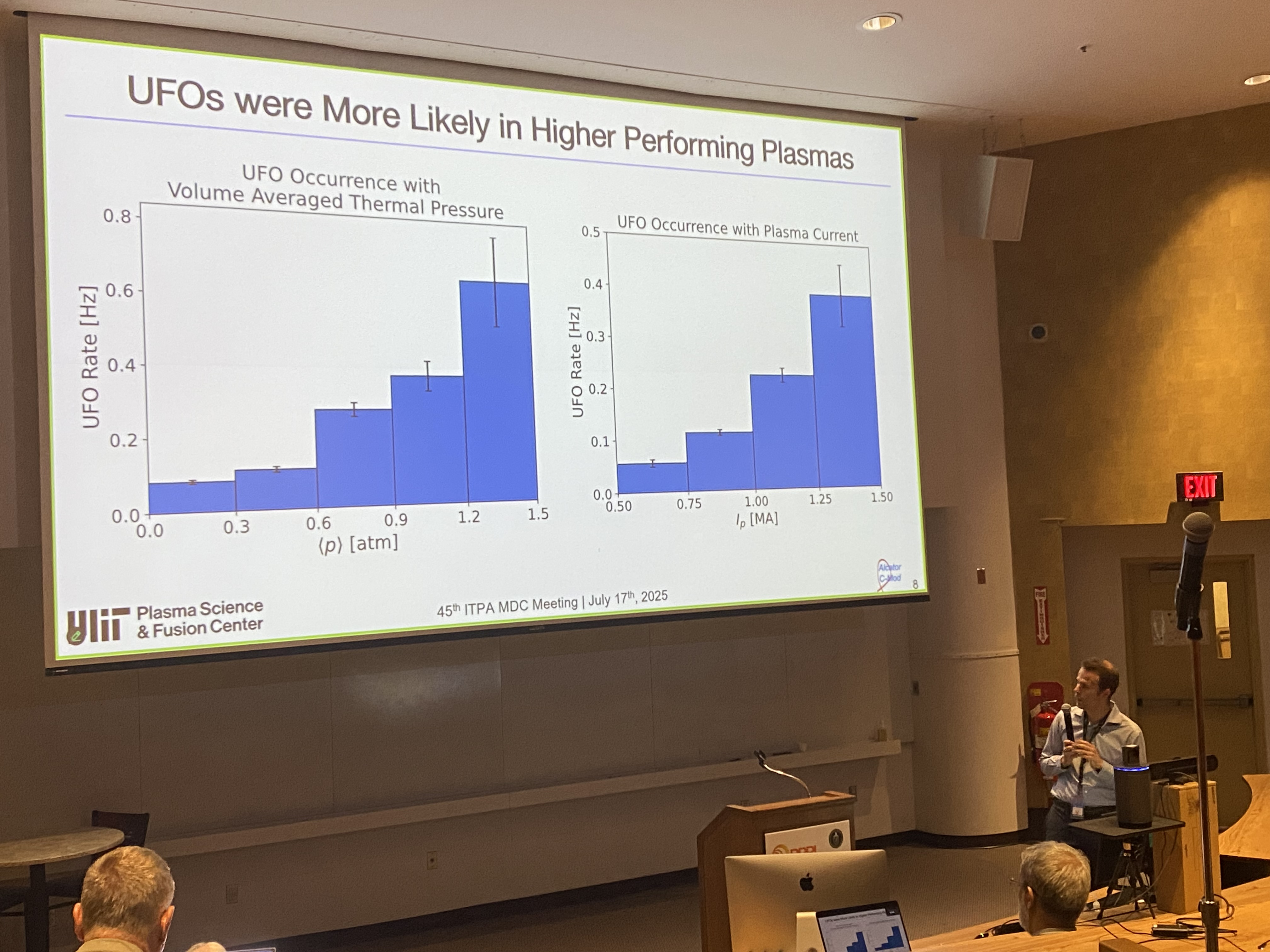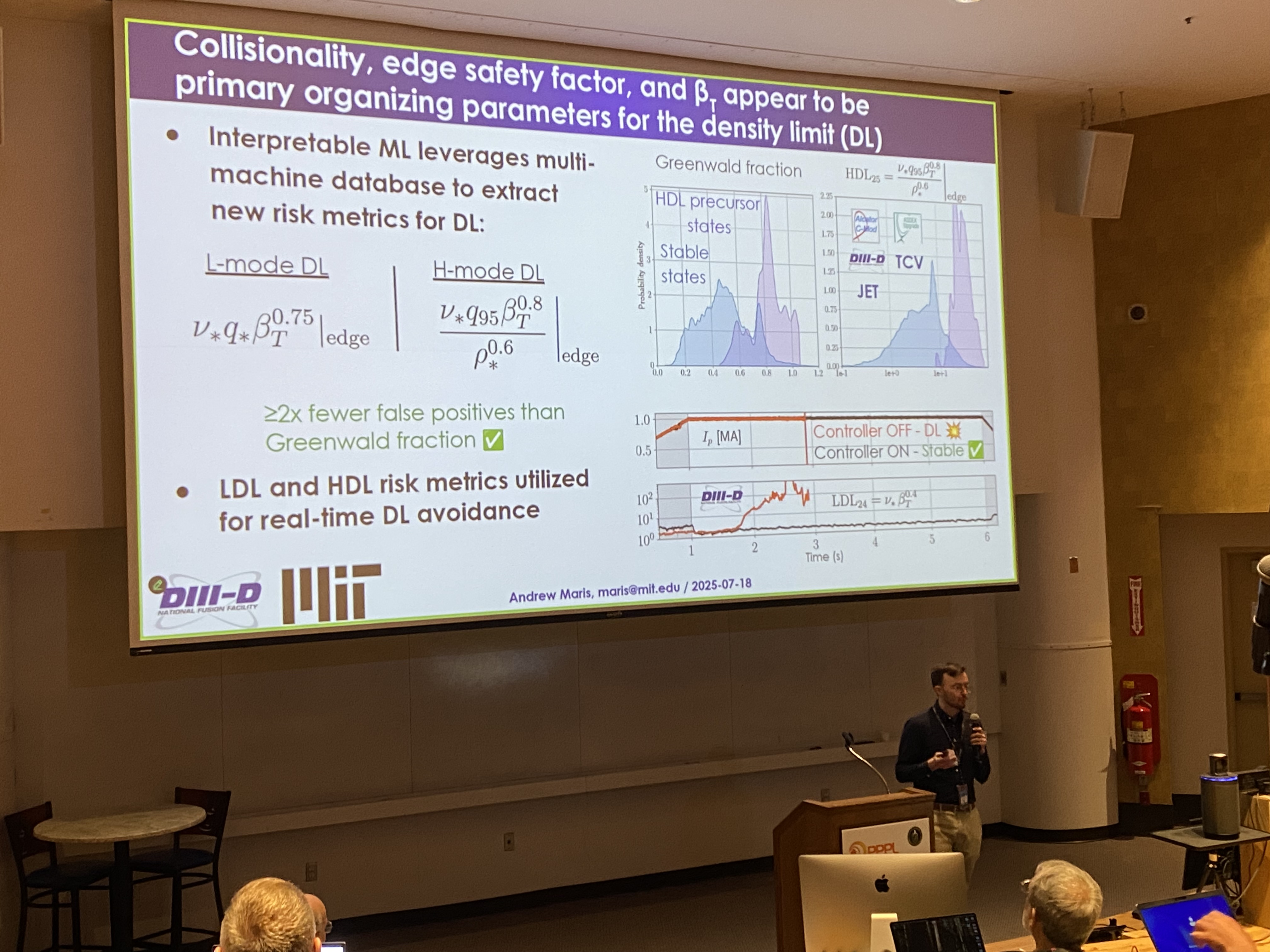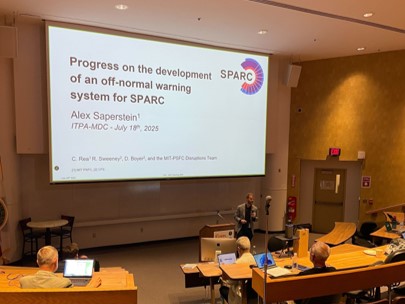Disruption Research at the 2025 ITPA-MDC, TSDW, and MHDW meeting series

Several members of the MIT PSFC Disruptions team attended a series of disruptions-focused workshops at the Princeton Plasma Physics Lab (PPPL) and Princeton University in Princeton, NJ from July 16-25th. This workshop series included the ITPA meeting on MHD, Disruptions, and Control (MDC), the Theory and Simulations of Disruptions Workshop (TSDW), and the MHD stability control Workshop (a collaboration between US-Japan); with many Disruptions team members attending one or more of these meetings. The ITPA meeting focused more on the progress on joint international activities in preparation for the ITER tokamak, while the TSDW and MHDW focused more specifically on developments in disruption theory/simulation and MHD stability control respectively. This was notably also the first year with representatives from Commonwealth Fusion Systems (CFS) in attendance and giving presentations, as CFS had recently been invited to join the ITPA group and provide updates on the development of SPARC and ARC. Our very own team members Robert Granetz, Ryan Sweeney, and Alex Saperstein provided these updates.
13 Disruption team members attended this series in total, with 7 (Robert Granetz, Cristina Rea, Cesar Clauser, Ryan Sweeney, Alex Saperstein, Andrew Maris, and Henry Wietfeldt) attending the ITPA meeting, 6 attending the TSDW (Ryan Sweeney, Rishabh Datta, Alex Saperstein, Ben Stein-Lubrano, Henry Wietfeldt, Andrew Maris), and 4 attending the MHDW (Wenhao Wang, Stuart Benjamin, Arunav Kumar, Rian Chandra).



The focus for the ITPA-MDC this year was split among 5 topics: updates on the DMS development for ITER and SPARC, updates on the MDC joint activities, two focused sessions on NTM stabilization and Disruption-free operation, and a general contributed session. The Disruptions team itself contributed to all but the NTM stabilization sessions. PhD student Andrew Maris gave a talk during the contributed session on his work on prediction and control of the density limit via edge collisionality. Group leader Cristina Rea gave an update on the joint activity covering the development of the Disruption Mitigation System triggering algorithm for ITER. Research Scientist Robert Granetz gave two talks, one on the joint activity covering UFO disruptions and diverter hot spot monitoring, and the other on the DMS plans for SPARC and ARC. CFS scientist Ryan Sweeney gave a talk on the plans for disruption-free operation in SPARC (and ARC). Postdoc Alex Saperstein gave a talk on the progress on the development of an ONW (Off-Normal Warning) system for SPARC. And PhD student Henry Wietfeldt presented on characterizing UFO disruptions on Alcator C-Mod.
Following the weekend, the TSDW kicked off at Princeton University. The Disruptions group once again made a strong showing. Former group member and current collaborator Ryan Sweeney gave an overview talk updating the community on SPARC’s disruption hardware and science progress. Postdoc Rishabh Datta presented on the effects of 3-D MHD on runaway electrons (RE) during SPARC disruptions, providing key insights on the RE topic that constituted the bulk of the talks and discussion section time. Group members also presented at the posters session: postdoc Alex Saperstein presented updates on the SPARC ONW system, postdoc Benjamin Stein-Lubrano shared analysis of JET disruption mitigation success, and graduate student Henry Wietfeldt discussed his UFO study. The last day began with an invited talk by graduate student Andrew Maris regarding his density limit analysis.
Later that week, the 29th Workshop on MHD Stability Control brought together US and Japanese researchers for three days of sessions spanning experiments, MHD theory, machine learning, and advanced control for MHD-driven disruption avoidance in JT-60SA, KSTAR and D-IIID. Highlights included a session on the MHD physics basis for the ARC H-mode scenario, a collaborative effort between CFS, Columbia, and MIT. Postdoc Arunav Kumar gave a talk on deep learning based surrogate and feedback architecture for vertical and X-point control in double-null plasmas. Postdoc Rian Chandra gave a talk on the progress of integrating synthetic magnetic diagnostics into SPARC and validating a synthetic data framework using C-Mod discharges. Postdoc Wenhao Wang gave a talk on 3D energetic particle transport simulations of SPARC sawtooth events using the M3DC1-K code. In the poster session, our PhD student Stuart Benjamin discussed the numerical challenges of determining minimum marginally stable island widths in cross-machine tearing mode studies, with implications for NTM instabilities and locked mode behavior.
Available meeting agendas:
| Presenter | Meeting | Title | Slides / Poster Abstracts |
|---|---|---|---|
| A. Maris | ITPA-MDC | Cross-device prediction and real-time avoidance of the density limit | slides |
| C. Rea | ITPA-MDC | MDC-22 report | slides |
| R. Granetz | ITPA-MDC | Update on the SPARC and ARC Disruption Mitigation Systems | slides |
| R. Granetz | ITPA-MDC | MDC-JA-4 High-Z UFOs and disruptions | slides |
| R. Sweeney | ITPA-MDC | Towards power plant relevant disruptivities in SPARC and ARC | slides |
| A. Saperstein | ITPA-MDC | Progress on the development of an off-normal warning system for SPARC | slides |
| H. Wietfeldt | ITPA-MDC | UFO Characterization on Alcator C-Mod | slides |
| R. Datta | TSDW | The effect of 3-D MHD activity on runaway electron generation during SPARC disruptions | abstract |
| A. Saperstein | TSDW | Design and development of an off-normal warning system for SPARC | abstract |
| B. Stein-Lubrano | TSDW | Thermal energy mitigation and toroidal peaking effects in JET disruptions | abstract |
| H. Wietfeldt | TSDW | Characterizing UFO Disruptions on Alcator C-Mod | abstract |
| A. Maris | TSDW | Improved warning and control of the tokamak density limit via machine learning of an analytic stability boundary | slides |
| A. Kumar | MHDW | Physics-Guided Deep Learning Surrogate for Real-time Control of Vertical Stability in ARC Double Null Plasma scenario | slides |
| R. Chandra | MHDW | Synthetic magnetic diagnostic integration on SPARC and C-Mod for MHD mode identification | slides |
| S. Benjamin | MHDW | Towards calculation of minimum marginally stable island widths in a cross-machine tearing mode database: Assorted numerical and physics challenges | slides |
| W. Wang | MHDW | Linear and nonlinear simulations of internal kink modes and associated energetic particle transport in SPARC using the M3D-C1 code | slides |
Enjoy Reading This Article?
Here are some more articles you might like to read next: